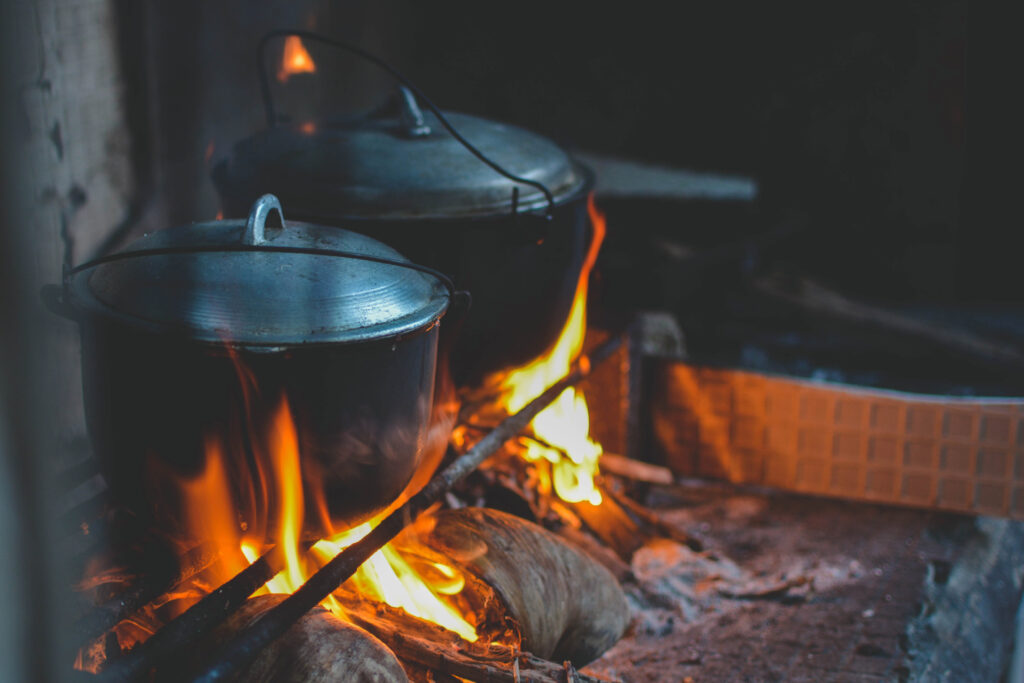The Lindy effect shows us that the future life expectancy of things and ideas is proportional to their current age. This is especially true for cooking.
Like we shouldn’t eat things that our ancestors didn’t eat, we should cook like our ancestors did cook. Old cooking techniques do still exist because they stood the test of time and turned out to be good for us.
Unfortunately, 90% of what supermarkets try to sell you is absolute garbage. Sugar, seed oils and refined grains are in every packaged food and make us sick. We can say that the industrial and agricultural revolution haven’t done any good to mankind after all.
Big Food doesn’t care about our health, only about their profits. And traditional cooking takes more time and hence is more expensive and leaves less room for profits.
Lately I’m noticing people are getting more conscious about nutrition. Although I think the whole pandemic situation has helped here. I guess it might be temporary and people will probably start moving back to high time preference behavior soon, though.
Even though there is still a giant leap to be made and there is a lot of false food propaganda going around, this is a positive development. And because of this conventional supermarkets are also starting to sell better products.
The downside is that healthy food is more expensive because of the labor intensity and costs of raw materials. In the western world the price of ghee is ~€25/kilo and bone broth is ~€10/liter, for example.
Luckily, we can learn to master all the ancient cooking skills and make stuff ourselves. This takes time, but if you do it instead of watching Netflix and scrolling Instagram it’s doable.
Things are pretty easy to prepare if you put in the work. I’m always trying to prepare new things and I’m writing a series of blog articles about it.
Every article will show you why you might want to add a product to your diet and how you can prepare it. I am constantly adding recipes to this list, after trying them out myself first.
The recipes:
Ghee
Ghee is clarified butter from India. The major advantages of ghee are that it is very resistant to heating and has a long shelf life.
It provides a lot of healthy nutrients and is suitable for people with lactose intolerance. That makes ghee one of the healthiest and tastiest cooking oils.
Bone broth
Bone broth is a savory cooking liquid that forms the basis for soups, stews and sauces.
It involves simmering animal bones, meat, seafood, or vegetables in water or wine, often for an extended period.
Bone broth contains many important nutrients, some of which are known to have incredible health benefits.
👉🏻 Learn more about bone broth
Sourdough bread
Sourdough is a bread made by the fermentation of dough using wild lactid acid bacteria and yeast, often for an extended period. Lactic acid from fermentation imparts a sour taste and improves keeping qualities.
Not only is it tastier than conventional bread, but it’s also arguably more nutritious. Sourdough bread is also less likely to spike your blood sugar and easier to digest.
👉🏻 Learn more about sourdough bread
Kefir
Kefir is a fermented milk drink similar to a thin yogurt that is made from kefir grains, a specific type of culture.
It’s a staple food in many cultures around the globe because it’s high in nutrients and probiotics, it is very beneficial for digestion and gut health. In fact, many people consider it to be more nutritious than yogurt.
Ice cream
Ice cream is a sweetened frozen food typically eaten as a snack or dessert. It may be made from milk or cream and is flavoured with a sweetener and a spice or with fruit.
It’s typically seen as garbage food, but if you make it yourself in a traditional way, with raw milk, it might actually be a health food.
